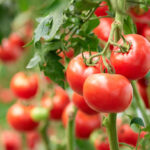
Welcome to our comprehensive guide on how to grow bok choy! In this article, we will provide you with valuable insights, expert tips, and step-by-step instructions to help you cultivate thriving bok choy plants in your garden. Bok choy, also known as pak choi, is a versatile and nutritious leafy vegetable that belongs to the Brassica genus. With its high fiber content, abundance of vitamins and minerals, and delicious taste, bok choy is a valuable addition to any culinary repertoire. Whether you’re a seasoned gardener or a beginner, this guide will equip you with the knowledge and skills needed to achieve a successful bok choy harvest.
Why Bok Choy is Worth Growing
Before diving into the specifics of bok choy cultivation, let’s explore why this leafy green vegetable is worth growing in your garden. Bok choy offers a range of health benefits, including being a rich source of fiber, calcium, vitamin C, vitamin K, and folate. Incorporating bok choy into your meals not only enhances their nutritional value but also adds a delightful taste and texture.
Bok Choy’s versatility makes it suitable for various cooking methods, such as stir-frying, steaming, blanching, or using it as a filling for dumplings and wontons. Its non-heading cabbage structure, with leaves that bush out but remain connected at the base, distinguishes bok choy from other leafy vegetables.
Furthermore, bok choy is a fast-growing plant, often ready for harvest in just six weeks from seed. This makes it an excellent choice for gardeners seeking a quick turnaround and a bountiful yield. Whether you have a large garden or limited space for container gardening, bok choy can thrive in different settings. Now, let’s delve into the details of cultivating this exceptional vegetable.
Bok Choy Varieties to Consider
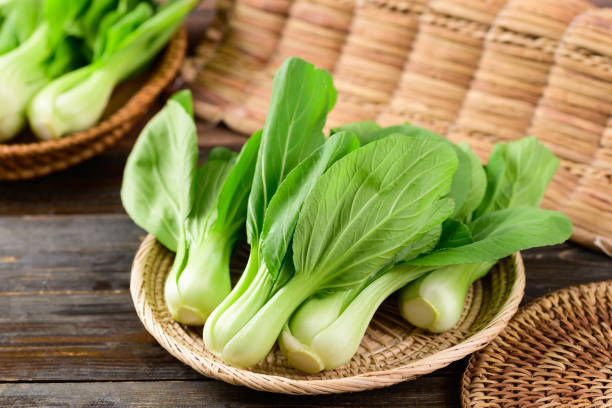
When it comes to bok choy, there are several varieties to choose from. In this guide, we will focus on two popular types: Shanghai Green and White Stem Dwarf Bok Choy. These varieties are widely available, adaptable to different growing conditions, and known for their culinary excellence.
Shanghai Green: This variety features light green stems and smooth, spoon-shaped leaves. Shanghai Green bok choy can be harvested at a small size, known as “baby bok choy,” or allowed to grow to medium size. Other variations include Mei Qing Choi and various hybrids.
White Stem Dwarf Bok Choy: This type of bok choy is characterized by its creamy white stems and darker green, curly leaves. It is smaller than Shanghai Green bok choy but equally delicious. White Stem Dwarf Bok Choy varieties include Dwarf, Hotau, and Nabi Queen.
While larger bok choy varieties, such as Joi Choi, are commonly found in grocery stores, we recommend opting for the smaller, more flavorful varieties. The Shanghai Green and White Stem Dwarf Bok Choy varieties offer superior taste and texture, making them ideal choices for home cultivation. These varieties are widely available as seeds online and can be sourced from reputable seed companies such as Second Generation Seeds, Kitazawa, TrueLove Seeds, Hudson Valley Seed Company, and Johnny’s Selected Seeds.
Ideal Growing Conditions for Bok Choy
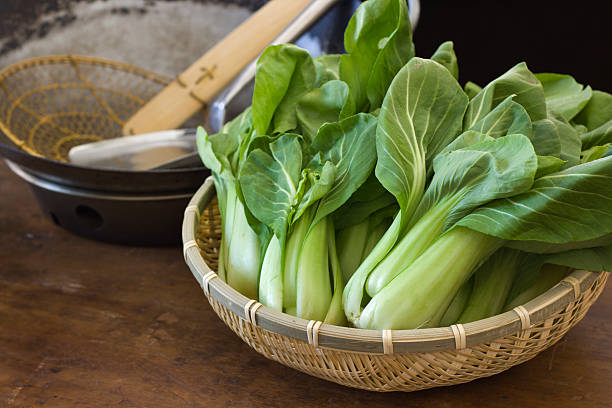
To ensure successful bok choy cultivation, it’s essential to provide the ideal growing conditions for your plants. Bok choy thrives in cooler temperatures and prefers to be shielded from extreme heat. Here’s a breakdown of the key factors to consider when creating an optimal environment for your bok choy:
Climate/Weather: Bok choy prefers temperatures between 55°F and 75°F (12°C to 24°C). Cooler temperatures are ideal, but some varieties can tolerate slightly higher temperatures if they receive adequate moisture. Timing your planting to coincide with a period of consistent temperatures within this range will give your bok choy the best chance to flourish. Consider planting in mid- to late spring for an early summer harvest or in late summer for a fall harvest, depending on your local climate.
Sunlight: Bok choy thrives in cool, sunny conditions. Ensure that your plants receive 6-8 hours of direct sunlight per day. As the weather warms, providing partial shade through nearby trees or structures can help protect the plants from excessive heat. However, if temperatures remain cool, full sun exposure is acceptable.
Soil Conditions: Bok choy requires rich, well-drained soil with good moisture retention. Avoid heavy, waterlogged soil that can lead to root and leaf rot. Enhance your soil by incorporating a 1- to 3-inch (approximately 5cm) layer of organic compost before planting. This will provide the necessary nutrients for healthy growth.
Watering: Bok choy plants need regular watering to maintain consistent soil moisture. Monitor the soil and water accordingly to prevent it from drying out completely. Be cautious not to overwater, as this can lead to root rot. On days with forecasted high temperatures, provide your plants with additional water to help them withstand the heat.
Spacing: Proper spacing between bok choy plants is crucial for optimal growth. For smaller varieties that reach a maximum height of 8 inches (20cm), allow approximately 6 inches (15cm) of space between plants. Maintain 6-inch (15cm) gaps between rows as well. If sowing seeds directly into the ground, you can initially space them closer together (2-3 inches or 5-8cm apart) and thin them as they grow. This method allows for efficient use of space and ensures adequate airflow around the plants.
Sowing Bok Choy Seeds
Now that you have established the suitable growing conditions for your bok choy, it’s time to sow the seeds. You have two options: direct sowing or starting seeds indoors and transplanting them later. Both methods have their advantages, and we will outline the steps for each approach.
Direct Sowing:
Direct sowing is a straightforward method that eliminates the need for seed trays or indoor setups. It involves planting the seeds directly into the ground where they will continue to grow. This approach is ideal for containers or weed-free garden beds. Follow these steps to direct sow your bok choy seeds:
- Prepare the soil by removing any weeds or debris and ensuring it is loose and well-drained.
- Sow the seeds about ¼ to ½ inch (approximately 1cm) deep, spacing them every 2 to 3 inches (5-7cm) in rows 6 inches (15cm) apart.
- Gently water the seeds using a fine sprinkle to avoid washing them away.
- Monitor the soil moisture and keep it consistently moist but not saturated.
- Once the seedlings reach a height of 1 to 2 inches (approximately 3-5cm), thin them out, leaving one seedling every 6 inches (15cm) to allow for adequate growth.
Starting Seeds Indoors & Transplanting:
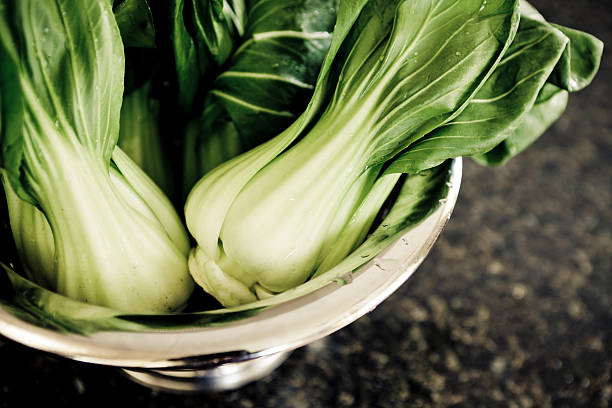
Starting your bok choy seeds indoors provides several benefits, including early growth and protection from adverse weather conditions. Follow these steps to start your seeds indoors and later transplant them outside:
- Begin sowing seeds indoors approximately 2-3 weeks before the intended planting date.
- Use a seed tray with a depth of a few inchesto sow the seeds. Space the seeds a couple of inches apart and plant them at a depth of about ¼ to ½ inch (approximately 1cm).
- Choose a sterile seed starting mix, garden compost, or a peat-free organic potting soil as the growing medium.
- Lightly cover the seeds with the chosen growing medium, ensuring they are adequately protected but still receive sufficient light for germination.
- Water the seeds gently, and place the seed tray in a warm location, such as a sunny windowsill or a heated mat, to facilitate germination. Consider covering the seed tray with a plastic bag or a clear plastic lid to maintain humidity and encourage germination.
- Once the seedlings emerge, remove the plastic covering and place them in a well-lit, well-ventilated area to prevent them from becoming leggy. If possible, provide additional light using grow lights to promote healthy growth.
- As the seedlings develop two sets of true leaves, which appear after the initial seed leaves, they are ready for transplantation.
- Before transplanting, gradually expose the seedlings to the outdoor environment in a process called hardening off. Place them in a protected outdoor location for a few days to acclimate them to sunlight, wind, and other outdoor conditions.
- Carefully transplant the seedlings into the ground, leaving 6 inches (15cm) of space between each plant. Ensure the seedlings’ root balls remain intact during the transplantation process.
- Water the transplanted seedlings thoroughly to support their establishment.
Caring for Bok Choy Plants
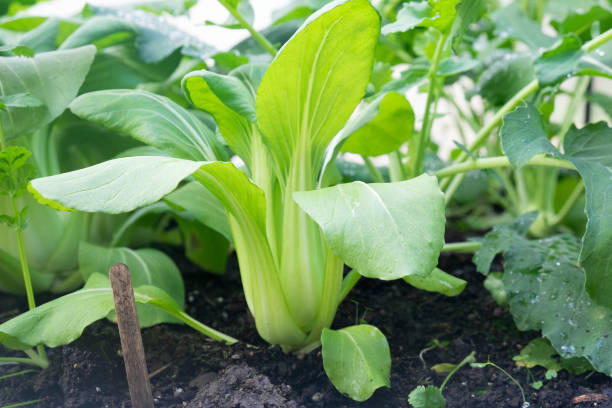
Once your bok choy plants are in the ground, it’s crucial to provide proper care to ensure their healthy growth and development. Here are some essential care tips to keep in mind:
Watering: Regular watering is vital to maintain consistent soil moisture. Check the soil regularly and water when it starts to feel dry. Keep in mind that bok choy prefers slightly moist soil but not overly saturated conditions. Avoid overhead watering, as it may lead to disease and fungal issues. Instead, water at the base of the plants to deliver moisture directly to the roots.
Mulching: Applying a layer of organic mulch around the bok choy plants can help retain soil moisture, regulate soil temperature, and suppress weed growth. Use materials such as straw, shredded leaves, or compost to create a protective mulch layer. Ensure the mulch is not in direct contact with the plant stems to prevent rotting.
Fertilization: Bok choy benefits from nutrient-rich soil. Prior to planting, incorporate organic compost into the soil to provide essential nutrients. If necessary, supplement with a balanced organic fertilizer during the growing season, following the manufacturer’s instructions. Avoid excessive nitrogen fertilization, as it can result in excessive leafy growth but inhibit proper head formation.
Pest and Disease Management: Bok choy may encounter common garden pests such as flea beetles, cabbage moths, and slugs. Implementing physical barriers, such as floating row covers, can help protect the plants from these pests. Additionally, practicing proper garden hygiene, such as removing plant debris and regularly inspecting the plants for signs of infestation, can minimize pest damage. If necessary, consider using organic pest control methods or consult with local gardening resources for targeted solutions.
Harvesting Bok Choy: Harvesting bok choy can be an exciting and rewarding experience. The timing of the harvest depends on your desired use and the variety you are growing. Baby bok choy can be harvested when the plants are small and tender, while larger varieties should be allowed to reach maturity. To harvest bok choy, cut the entire plant at the base using a sharp, clean knife or scissors. Alternatively, you can harvest individual outer stems, allowing the center of the plant to continue growing. Harvest bok choy as needed for immediate consumption or store it unwashed in a sealed container or reusable bag in the refrigerator for up to four days.
By following these care instructions and maintaining a vigilant approach to monitoring your plants’ health, you will be rewarded with a bountiful harvest of fresh and nutritious bok choy.
Conclusion
Congratulations! You are now equipped with the knowledge and guidance to grow bok choy successfully. From selecting the right varieties to creating optimal growing conditions and implementing effective care practices, you have the tools to cultivate thriving bok choy plants in your garden. Remember to monitor your plants regularly, provide adequate water and sunlight, and address any pest or disease issues promptly. By following these guidelines and incorporating your own gardening expertise, you will be able to enjoy a steady supply of delicious and nutritious bok choy throughout the growing season. Happy gardening and bon appétit!


